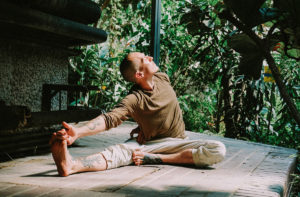Can Regenerative Medicine Take the Place of Surgery?
 Author: Dr. Dustin Moffitt, ND
Author: Dr. Dustin Moffitt, ND
Patients often present in my office with concerns of damage to joints, ligaments, and tendons. As a Naturopathic Doctor, much like any doctor, I must inform them of all treatment options. The options I discuss most often are therapies like regenerative joint injections, chiropractic, rehabilitation therapy, acupuncture, manual therapies, and of course, surgery. The question always is, can surgery be avoided through the use of more natural means, more specifically regenerative joint injections like Platelet Rich Plasma, Dextrose Prolotherapy, and Prolozone?
I think it is necessary to first discuss the nature of regenerative medicine and injection therapy and then compare these modalities’ pros and cons to those of surgery.
What is Regenerative Medicine?
Regenerative medicine is defined as a process of regenerating or replacing human cells, tissues, or organs to restore or establish normal function. My expertise in this field lies in regenerative joint injections, including Platelet Rich Plasma (PRP), Dextrose Prolotherapy, Prolozone, Exosomes, Peptides, and Stem Cells.
When patients arrive at my office, they have often already sought out the advice of an orthopedist. This advice generally includes some sort of replacement or corrective surgery. A typical example of this is with the knee. MRI scans will show mild to moderate osteoarthritis (inflammation of the bone and joint). The orthopedist often states that while the knee isn’t bad enough for surgery at the moment, it will likely need replacing in a few years. Steroid injections are recommended for immediate relief of inflammation and pain. The first injections may help the pain, but after many years and several injections, nothing is done to repair the damage. At this point, the osteoarthritis is classified as “severe,” and the patient is now a candidate for knee replacement as the newest MRI shows “bone on bone.” The chronic inflammation and irritation have slowly worn away so much of the joint that the easiest solution is a replacement, either total or partial, with man-made parts.
 How did we get here?
How did we get here?
Over time the surface of articular cartilage in a joint gradually wears away, leading to a condition known as osteoarthritis. Osteoarthritis is a result of natural aging but may be expedited by trauma such as a tear. In allopathic medicine, treatment options include “watch and wait,” pain management, corticosteroid injections, and eventually joint replacement in those who have exhausted all other non-surgical measures.
The question becomes – can PRP still help in this case? In most circumstances, yes. Often orthopedists prefer that a joint be “bone on bone” or a tear from trauma to be at least 80% or higher before employing major interventions like surgery. Up to that point, they may rely on corticosteroid treatments to manage pain and inflammation, which only serve as a bandage approach while the underlying problem progresses. On the other hand, PRP can be used much sooner and will often prevent the progression of the condition.
Generally speaking, tears respond best to PRP when they are between 0 and 80% torn. However, it is possible for more severe tears to heal using PRP. 1 Otheoarthiris- based conditions respond well in all stages, whether it is the first month of symptoms or the tenth year of symptoms.2
Weighing treatment options
Rather than suggesting the treatment option I would choose, I empower my patients to make informed decisions about which option is best for them by educating them on each therapy’s pros and cons. Below are some of the things that must be taken into consideration.
Is the patient a good candidate for treatment?
Even if a patient presents with a condition deemed suitable for surgery or joint replacement, they may have limitations that won’t allow them to undergo treatment. Things like sepsis, local infection, bleeding disorders, pregnancy, and breastfeeding may be contraindications for surgery. Comorbidities and even age may also limit a person’s ability to undergo a surgical procedure. Anesthetics and other narcotics used during the procedure may also present a problem for some patients.
For PRP, the list is much smaller. Patients who are pregnant or breastfeeding should not receive PRP. While PRP uses the patient’s own plasma, those with potential allergies to dextrose or other injection ingredients may not be the right candidate for treatment.
What is the timeline for treatment and recovery?
Surgeries often require weeks, if not months, on a waitlist and then a full day dedicated to prep, surgery, and recovery. The typical knee replacement requires 3-6 weeks of recovery before returning to work, six weeks before driving, and 6-12 months before the full range of motion is restored.
PRP is a 60-90 minute procedure that is often performed the same day as the consultation. Treatment does not require anesthesia or a recovery period before leaving the clinic. PRP will not interfere with your ability to work or drive, but 3-5 days of “taking it easy” is recommended to allow adequate time for healing. However, unlike surgery, PRP does require a series of treatments for best results. A series generally includes 3-5 treatments for the affected region with 3-4 weeks between each treatment.
Are pharmaceuticals or other medications necessary?
Undergoing surgery generally requires the use of anesthesia during the procedure as well as pain relievers and anti-inflammatories as aftercare.
PRP uses a topical anesthetic cream applied to the local area during treatment to decrease the sensation from the needle. Medication following the procedure is unnecessary most of the time. I often recommend that patients take collagen-building supplements such as a multivitamin, collagen, MSM, glucosamine, and chondroitin sulfate during and after their series of treatments.
Will there be scarring?
After surgery, visible scarring and adhesions under the skin where the damaged tissue is sewn back together are common. This is often dependent on the surgery region and may result in the need for further treatment such as Instrument Assisted Soft Tissue Manipulation therapy (IASTM) afterward.
PRP is a set of small, pinpoint injections with a small needle. The needle may cause slight and temporary bruising and minor inflammation. However, when the area heals, there will be no cosmetic changes to the region.
What are the residual effects of treatment?
In the case of the knee, specifically, joint Replacement Surgeries have a 45.8-90% success rate that lasts 10-15 years on average. The surgery often requires 6-8 weeks of Physical Therapy and home exercises after treatment. With a successful replacement and adequate recovery time, most individuals do not need pain management pharmaceuticals or physical support long term. However, in some cases, a second surgery may be required further down the road. Physical therapy may also be necessary to mitigate damage to other regions caused by years of compensation for the injury.
PRP has been shown to have anti-inflammatory and tissue regenerating effects on healing tendons, ligaments, and bony tissues. Multiple studies have indicated that PRP is superior to hyaluronic acid and corticosteroids in terms of improving patient-reported pain and functionality scores . Unless additional trauma or degeneration occurs over the years, no further treatments are needed. Physical Therapy may be suggested if the condition has become chronic, and corrective therapies are necessary to rebalance the way the body distributes weight and uses specific muscles after compensating for the injury. Long term pharmaceuticals are generally not needed for pain management.
Will the procedure cause any damage?
There are different types of surgical procedures. Some replace a naturally occurring human body part with a man-made part while others scrape or remove a portion of a body part without adding anything new. Both types are invasive and can cause scar-tissue build-up, muscle atrophy, and compensation-based injuries resulting from a decreased range of motion. When a surgery calls for metal pins and rods, this may also mean abnormal responses to changes in temperature, barometric pressure, and of course, the infamous triggering of the metal detector and the airport.
With PRP, there is a chance of infection or nerve damage in the treated area as there is a needle penetrating the area. There may also be localized bruising and bleeding and general achiness that can last up to a week on average. Most patients tolerate the procedures with little to no issue. On the off chance that the PRP does not work for you, surgery will still be an option. However, if you get surgery, there is no “undoing” the procedure.
Unfortunately, with any treatment, there is never a guarantee of success. It is ultimately up to the patient to decide if regenerative medicine will take the place of surgery for them. However, my goal is to provide a thorough evaluation and informed discussion, so patients leave my office feeling confident in their next steps.
References
PMID: 31516982
PMID: 26312841
PMID: 31516982
PMID: 30423591





